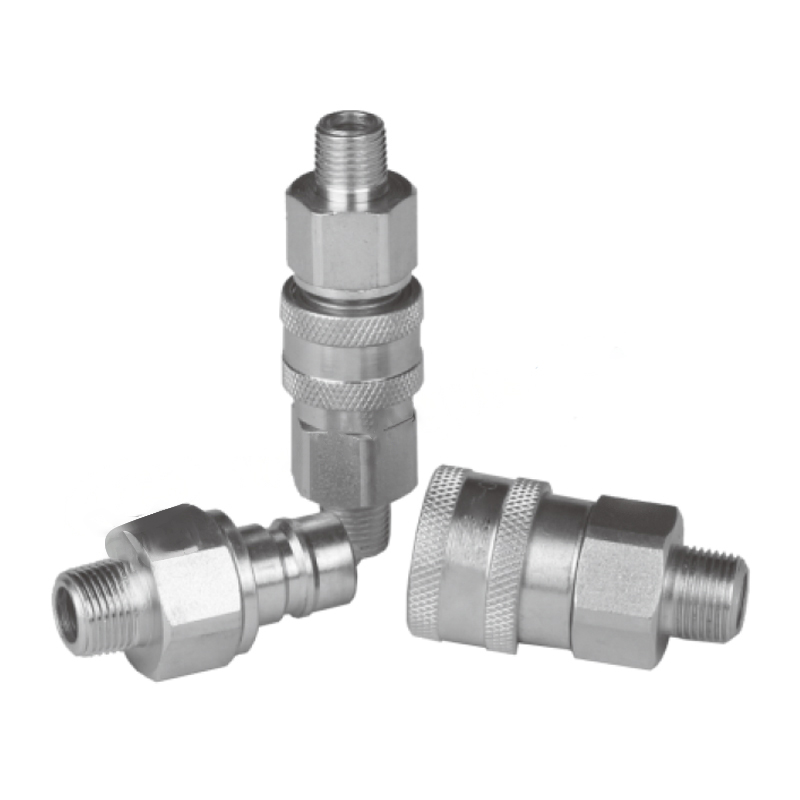What safety features do quick release couplings have to prevent accidental disconnection?
Quick release couplings often incorporate various safety features to prevent accidental disconnection and ensure secure connections. These features may include:
1.Locking Mechanisms: Quick release couplings are often equipped with locking mechanisms that engage when the coupling is properly connected. These mechanisms typically involve a mechanism such as a push-button, sliding collar, or twisting ring that secures the coupling components together. The operator needs to perform a deliberate action to release the coupling, ensuring that accidental disconnection is less likely to occur.
2.Visual Indicators: Many quick release couplings incorporate visual indicators that provide a clear visual cue regarding the connection status. These indicators can include color-coded markers or windows that change color when the coupling is engaged, making it easy for operators to verify at a glance whether the coupling is properly connected.
3.Audible Click or Confirmation: Some couplings emit an audible click or confirmation sound when the coupling is fully engaged. This auditory feedback provides operators with an additional sensory cue, assuring them that the connection has been securely made.
4.Color-Coding: Quick release couplings often feature color-coded components, where the male and female parts of the coupling have distinct colors. This color-coding helps operators quickly identify and match the correct components, reducing the risk of mismatched connections and accidental disconnections.
5.Redundant Sealing: High-quality couplings may have redundant sealing points, meaning they feature multiple seals or gaskets within the coupling to ensure a secure connection and prevent leaks. If one seal were to fail, the additional seals would provide backup protection against fluid leakage.
6.Pressure Relief Valves: Certain quick release couplings are designed with pressure relief valves that automatically release excess pressure before the coupling is disconnected. This feature prevents sudden and potentially hazardous fluid discharge upon disconnection.
7.Shielded Design: Couplings can have a shielded or shrouded design that covers the coupling connection area. This shielding protects the connection from accidental contact, physical impact, or external forces, reducing the likelihood of disconnection.
8.Threaded Locking Rings: Threaded locking rings are often used in hydraulic quick release couplings. These rings are tightened over the coupling components, providing an additional layer of security by physically locking the components together and preventing unintended separation.
9.Non-Spill Design: Quick release couplings with a non-spill design feature internal valves that close off the fluid flow within the coupling before disconnection occurs. This prevents any fluid from escaping during the disconnection process, minimizing environmental hazards and reducing the risk of contact with hazardous materials.
10.Interlocking Mechanisms: Interlocking mechanisms involve coupling components that fit together in a way that prevents disconnection without performing a specific action. This mechanism ensures that the coupling remains engaged until the operator intentionally unlocks or releases it.
11.Fail-Safe Materials: The choice of materials used in manufacturing quick release couplings can contribute to their overall safety. Couplings made from durable and reliable materials, such as corrosion-resistant alloys or high-strength plastics, enhance the coupling's ability to maintain its integrity even under challenging conditions.
The GT-A2 closed-type thread locked hydraulic quick connect coupling sets are a type of hydraulic coupling used to quickly and easily connect and disconnect hydraulic lines. The coupling set includes a male and a female connector, which are designed to fit together and form a tight seal when connected.



Contact Us